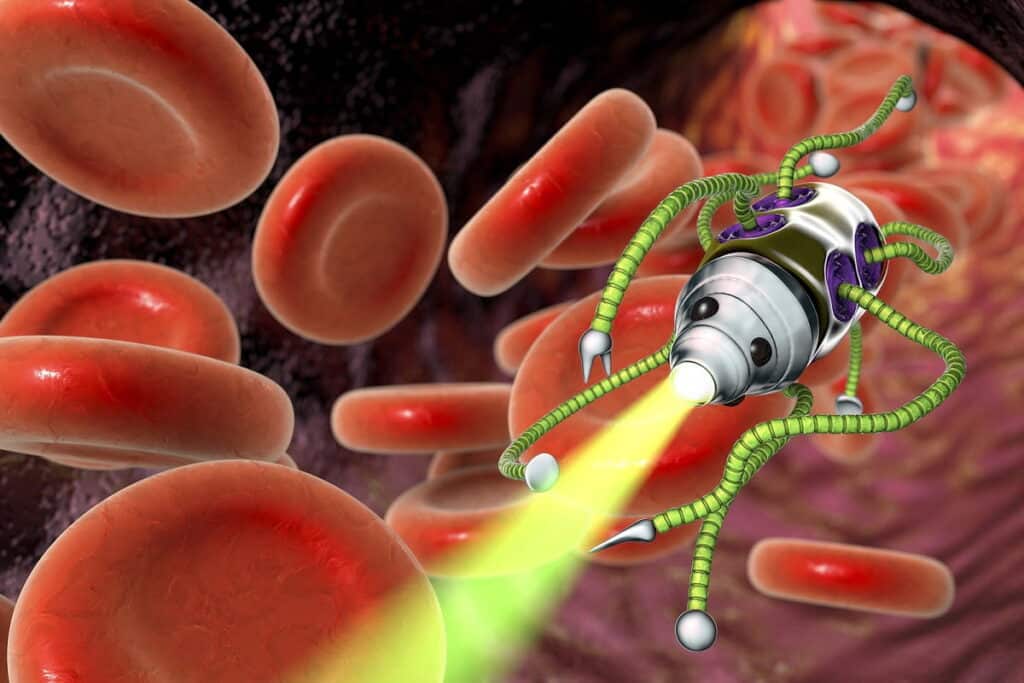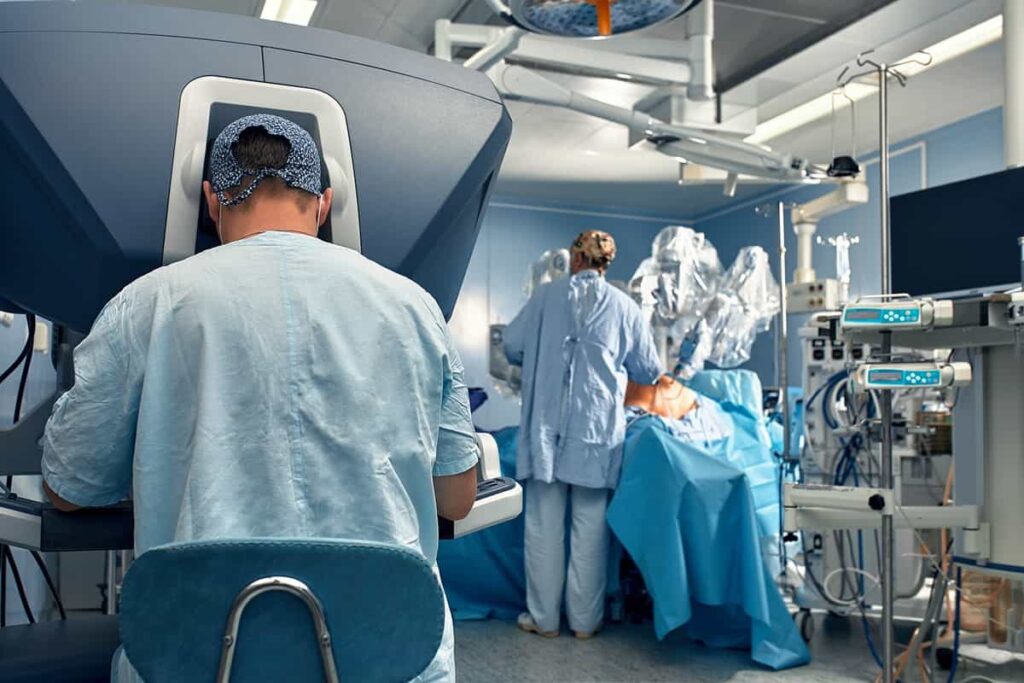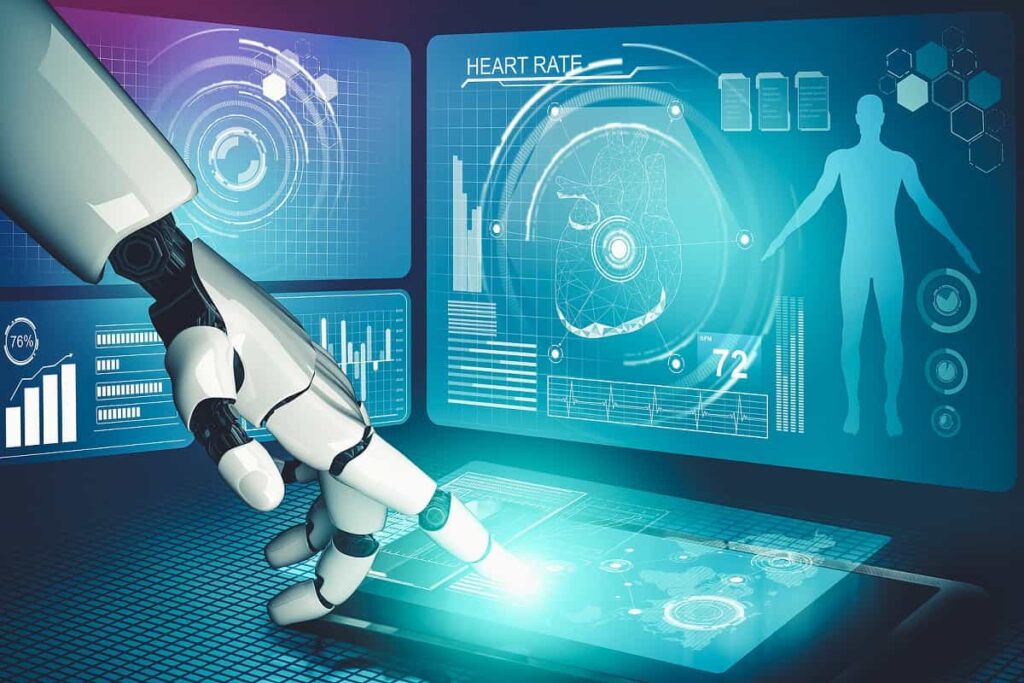Bionaut Sends Robots into the Human Body to Treat Disease
Table of contents

It may sound like science fiction, but there was a time when people were optimistic about the future. Perhaps no other decade embodies that optimism than the 1960s, though maybe it was all of the psychedelic drugs. Still, we made it to the moon, and sci-fi shows like “Star Trek” offered an inspiring vision of exploring strange new worlds and exotic alien bodies. The same year Capt. Kirk beamed across the galaxy, a movie called “Fantastic Voyage” hit the big screen in 1966. The film was about a submarine crew who are shrunk to microscopic size in order to enter the body of an injured scientist to repair damage to his brain. Crazy, impossible stuff, right?
Fifty-something years later, psychedelics are an emerging therapy, we’re headed back to the moon to mine for riches, and William “Capt. Kirk” Shatner has released eight spoken-word albums but has yet to win a Grammy. And, oh, we’re about to send miniature robots into the human body to help repair damage to the brain and the rest of the central nervous system. Let’s meet the startup on this fantastical journey.
Investing in Exponential Technology
Founded in 2016, Los Angeles-based Bionaut Labs came out of stealth mode this month by raising a $20 million Series A led by one of the top tech-loving venture capital (VC) firms, Khosla Ventures, which also participated in an undisclosed Seed round a couple of years earlier. Another investor is BOLD Capital, a VC outfit where Peter Diamandis serves as general partner. The well-known billionaire futurist invests in what he calls “exponential” technologies, particularly in areas like human longevity.
In a blog post about the value proposition of the company, Diamandis wrote:
Technologies such as Bionauts and the many other medical robots entering the healthcare arena are resulting from the extraordinary convergence of exponential technologies. The combination of computation, AI, sensors, networks, 3D printing, VR and AR is transforming how we find and treat disease.
Peter Diamandis
Another thing to note before we talk about what has Diamandis so excited about Bionaut Labs is that several members of the startup’s leadership and advisory board have affiliations with a company called PrimeSense. Never heard of it? Us neither, but most of us are familiar with Microsoft’s Xbox. Microsoft (MSFT) acquired PrimeSense, which had developed 3D motion-sensing technology used in the Xbox 360, for $360 million in 2013. One PrimeSense alumnus is Michael Shpigelmacher, co-founder and CEO of Bionaut Labs, who has also done stints at McKinsey & Company and hedge fund company PDT Partners that was spun off from Morgan Stanley about a decade ago. So this is a company, as they say, with proven leadership.
Micro Robots for Precise Therapeutics
In a nutshell, Bionaut Labs is developing remote-controlled robots smaller than a grain of rice that navigate through the body for precision treatment of disease, starting with the brain and central nervous system. We need to make a quick distinction here: Precision medicine, also known as personal medicine, applies genetics, machine learning, and other tools in order to tailor treatments as much as possible to a person’s particular physiology. That’s different from what Bionaut Labs is doing, which is creating a precise drug delivery platform, rather than the spray-and-pray approach of most medical therapies today. This is also different from the robotic pills that we’ve written about before that are designed to replace injections.

Measuring less than one millimeter in length, the 3D-printed Bionauts contain moving parts controlled remotely by a magnetic guidance system. The magnetic energy required to operate the robot is less than 10% of that used in MRIs and is much cheaper to generate, according to Diamandis. These miniature medical machines are actually capable of autonomous operation but humans will remain in the loop, especially in the early days.

The bot is injected either into the lumbar spine, like in an epidural procedure, or behind the skull. It then speeds and slices its way through tissue to the target site, such as a tumor, where it is magnetically triggered to release a drug payload from the cargo compartment. The robot then returns the way it came. Bionauts can even go “off road” compared to conventional technologies that stick to established routes such as the vasculature. For example, they can swim through cerebrospinal fluid or even burrow through brain tissue. The accuracy is on par with surgeons, with a deviation of just one millimeter. The robot can be designed in a range of sizes, payloads, shapes, topologies, functions, and flavors. We might have made up one of those.
The Future of Healthcare
Bionaut Labs claims that roughly half of all approved medicines treat diseases that are local in nature, where precision targeting using its wee robots offers better results and less chance of side effects. The company is initially targeting its robotic drug delivery system against glioma and Huntington’s disease. The former is a type of tumor that forms in the brain or spine, representing 80% of all malignant brain tumors. The latter is a progressive degenerative brain disease with few treatment options.

Eventually, the company believes its robots could become diagnostic tools in addition to therapeutic ones by remaining in the body to detect disease before symptoms occur. Diamandis predicts even more futuristic versions, such as even smaller Bionauts for minimally invasive treatments of eye disease.
That’s all still well into the future. The company is currently in the preclinical phase, testing the Bionauts on pigs and sheep, with human clinical trials still a couple of years away.
Conclusion
We started Nanalyze nearly 20 years ago over our sheer fascination with the potential of nanotechnology. The idea that microscopic machines – nanobots as we used to call them – could someday help treat disease was one of the most exciting applications of the technology. It’s already happening in areas like synthetic biology, which is engineering biological machines out of bacteria, proteins, and more. While not yet on the nanoscale, Bionauts represent the first generation of miniature mechanistic machines that can do a big job.
Sign up to our newsletter to get more of our great research delivered straight to your inbox!
Nanalyze Weekly includes useful insights written by our team of underpaid MBAs, research on new disruptive technology stocks flying under the radar, and summaries of our recent research. Always 100% free.















